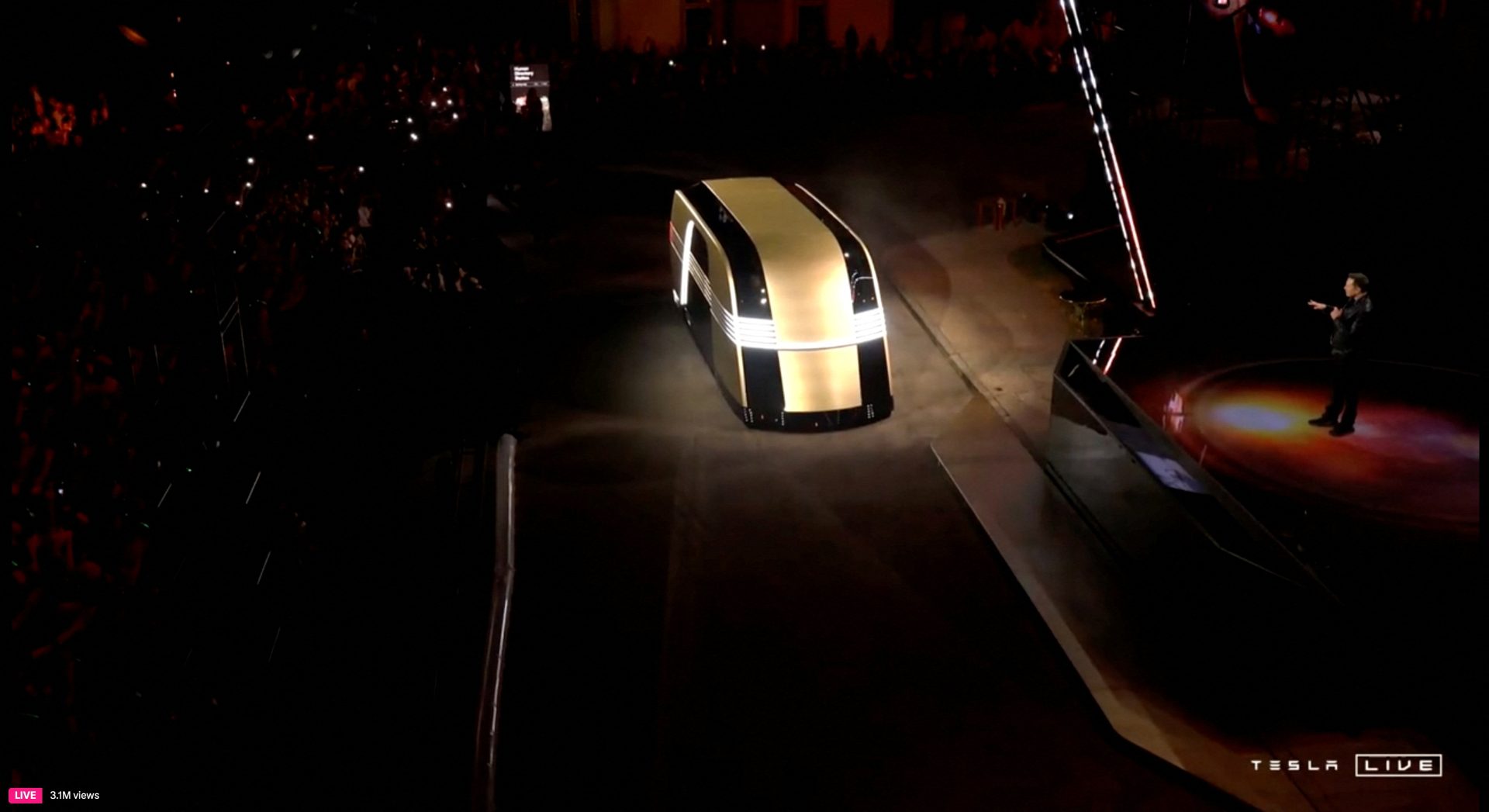Elon Musk Unveils Tesla Robotaxi and Robovan at “We, Robot” Event
Elon Musk Unveils Tesla Robotaxi with gull-wing doors and no steering wheel or pedals at a high-profile event on Thursday. The company’s focus is shifting from producing low-cost, mass-market vehicles to becoming a robotics manufacturer. Musk also revealed the addition of a larger self-driving vehicle, called the Robovan, which can carry up to 20 passengers.
The event, titled “We, Robot,” took place at Warner Bros. studio in Los Angeles, California. It emphasised Tesla’s evolving role as an artificial intelligence (AI) and robotics company rather than a traditional automaker.
Affordable Robotaxi Targeted for 2026
Musk arrived on stage in the “Cybercab,” a sleek robotaxi that is expected to enter production in 2026. The vehicle will be priced at less than $30,000 and feature inductive charging, eliminating the need for traditional plugs. According to Musk, operating costs will be around 20 cents per mile, significantly lowering transportation expenses for users.
“The autonomous future is here,” Musk announced, stating that 50 fully autonomous Tesla cars, including Model Ys and Cybercabs, were on display at the event. However, the cars rely solely on AI and cameras, forgoing other technologies such as lidar that many rivals use, which some investors and analysts view as a potential technical and regulatory challenge.
New Self-Driving Fleet Model
Musk’s vision involves a fleet of self-driving Tesla taxis that users can hail through an app. He also plans to let individual Tesla owners earn revenue by listing their vehicles as robotaxis on the platform. This strategy aims to generate additional income for Tesla owners and expand the availability of autonomous transportation.
Event Fails to Provide Key Production Details
While the new robotaxi and Robovan generated excitement, some investors expressed disappointment over the lack of specific timelines and details on scaling production or obtaining regulatory approval.
“Everything looks cool, but not much in terms of timelines. I’m a shareholder and pretty disappointed. I think the market wanted more definitive timelines,” said Dennis Dick, equity trader at Triple D Trading.
Musk acknowledged that he tends to be optimistic with timeframes. He had previously stated in 2019 that operational robotaxis would be available by the following year, a promise that remains unfulfilled.

Challenges in the Robotaxi Market
Tesla is not alone in facing difficulties entering the robotaxi market. Complicated technology and stringent regulations have led to billion-dollar losses for other companies, including Alphabet’s Waymo and General Motors’ Cruise. Some firms, like Amazon’s Zoox and several Chinese companies, continue to push forward, but the challenges are significant.
Tesla’s approach differs from competitors by relying on cameras and AI to operate its Full Self-Driving (FSD) software. While this reduces costs, FSD requires constant driver supervision and has faced regulatory and legal scrutiny following fatal accidents linked to the technology.
Musk mentioned that Tesla expects to launch fully autonomous, unsupervised FSD in Texas and California next year for the Model 3 and Model Y. However, he did not clarify whether the new robotaxi will depend on existing FSD technology or include new advancements.
Shifting Focus Amidst Declining EV Demand
The push for autonomous vehicles comes as Tesla faces challenges in maintaining its market position. The company is at risk of its first-ever decline in deliveries this year due to waning demand and stiff competition. While Tesla has introduced steep price cuts to attract buyers, these have put pressure on profit margins.
Thursday’s event signals Tesla’s broader strategic shift towards robotics and AI, moving away from its earlier emphasis on affordable electric vehicles. As Tesla navigates this new direction, the success of its robotaxi and other autonomous initiatives will be critical in defining the company’s future.





